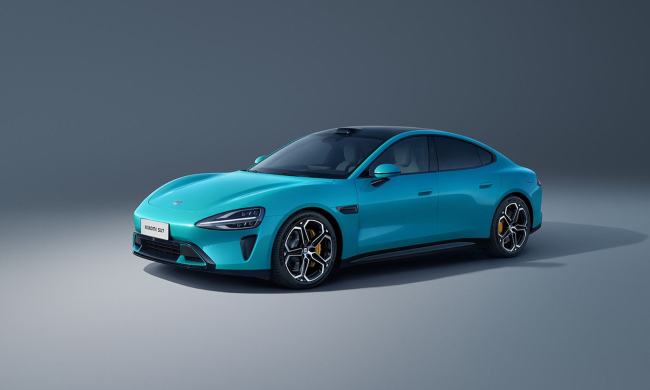
Don’t let the name Autopilot fool you: None of the cars in Tesla’s current range are capable of driving themselves. Instead, Autopilot is a partially automated system that is regularly improved via over-the-air software updates. It relies on eight surround-view cameras that give the car 360-degree visibility for up to 820 feet, 12 ultrasonic sensors, and a forward-facing radar. Tesla has regularly stressed that, unlike its rivals, it doesn’t believe in lidar technology.
The data gathered by Autopilot’s hardware allows the car to steer, accelerate, and brake automatically within its lane, commonly called adaptive cruise control, though the company warns the system requires active driver supervision. In other words, even if your Model S can steer itself around a bend, you shouldn’t be watching a movie while you cruise down I-80 at 75 mph. There are many circumstances Autopilot can’t handle on its own, and the driver could be asked to take over without notice.
Tesla also offers a more comprehensive suite of partially automated technology confusingly named Full Self-Driving Capability. We can’t stress this enough: It does not turn a Tesla into a self-driving car. Will it one day? Maybe. Hopefully, considering it’s a very expensive option. But, as of 2020, your new Tesla will be human-driven even if it’s equipped with Full Self-Driving. With that disclaimer out of the way, the suite adds Navigate on Autopilot (which suggests lane changes and tackles on- and off-ramps on its own), Smart Summon (which lets users move their car in and out of a parking spot), plus Traffic and Stop Sign Control (which recognizes and obeys traffic lights as well as stop signs). Note the latter feature is still in beta mode, so users are also the technology’s guinea pigs.
Owners have driven approximately 3 billion miles using Autopilot, according to Tesla. That’s far more than Cadillac owners have put on Super Cruise, but the system has been at the center of many high-profile (and sometimes deadly) crashes. Several government agencies (including the National Highway Traffic Safety Administration) have investigated its role in accidents, too. Its record is far from spotless.
Which cars have Tesla’s Autopilot?

Tesla makes Autopilot technology available across its entire range. It’s standard on the Model S, the Model X, the Model 3 (pictured), and the Model Y, and it will also be offered on the Cybertruck and the second-generation Roadster. It remains an independent company, and it’s not the sharing type, so there’s not a single non-Tesla-designed car offered with Autopilot. The company plans to keep its technology in-house in the foreseeable future.


